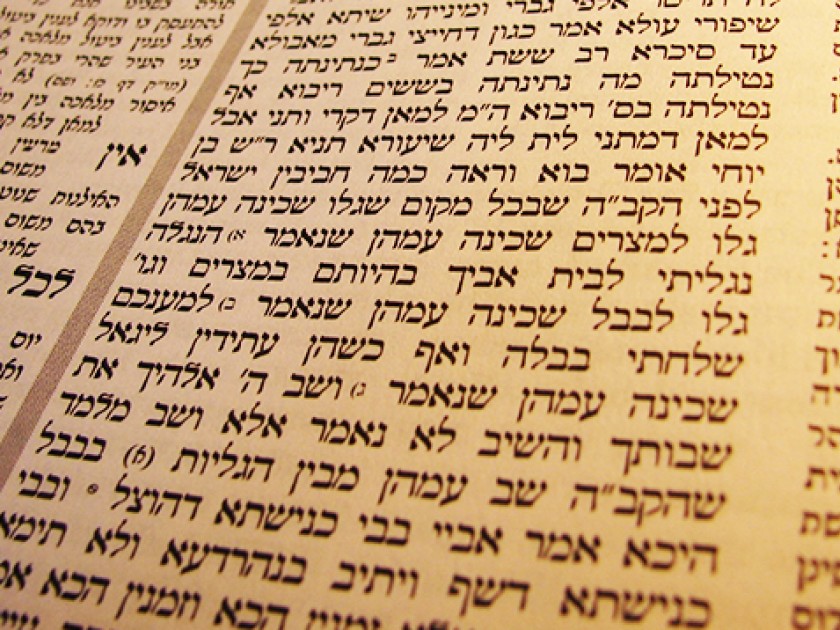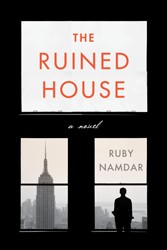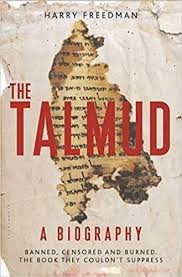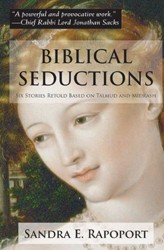
Image via Flickr/TikkunGer
Ruby Namdar is the author of the novel The Ruined House, out this week from Harper Books. Earlier this week, he wrote about how he came to see the Holy Temple as a source of inspiration. He has been blogging here as part of the Jewish Book Council’s Visiting Scribe Series.
I did not grow up religious, and received no Yeshiva-style Talmudic training. Growing up in a nostalgically traditional home and attending a secular public school in Jerusalem during the seventies, I knew almost nothing about the Talmud. All I knew was that it was ancient, complex to the point of being unintelligible, and completely irrelevant to my life as a modern Jew.
There were a few reasons behind this ignorance. For decades the Talmud — once the most dominant sources of Jewish learning — has been marginalized and pushed aside by secular Zionist culture. Instead of studying the strange and wonderful tales of the Talmudic ages, we studied the differently wonderful epic tales of the Bible, stories of kings and warriors which resonated much better with the Zionist Zeitgeist. Another reason for the alienation we felt towards the Talmud was the language barrier. The Talmud is written mostly in Aramaic, a dead language that, not unlike Latin, was preserved only in a narrow religious context. Talmudic Aramaic, albeit bearing some similarities to Hebrew and being written in Hebrew characters, is a foreign language for most Israelis.
Lastly, there was the layout: the complex, maze-like, multi-columned page with its almost microscopic letters and strange, archaic fonts. This layout served as a wall, fencing us out of our ancestral cultural heritage and one of the most intellectually challenging works known to humanity, the Talmud. Paradoxically, it was a discussion of a wall, and especially the technical and legal aspects of it, that the Israeli education system chose as the gateway to our acquaintance with the Talmud. It was in high school when we received our first and last dose of Talmud. A short, round, aging teacher wearing a tattered yarmulke on his balding head stood helplessly in front of a class of indifferent, hostile teenagers and tried to open our minds to the intricacies of the discussion about sizes, lengths and width of walls, fences and partitions separating two adjacent yards. How pathetic, how hopeless, how doomed to failure was this effort! Now, knowing what exciting narrative parts and incredible textual riches are hiding in the Talmud, I cannot but think that this sugia (Talmudic debate) was deliberately chosen in order to stifle any interest we may ever develop in this grand intellectual work.
Ironically, the same layout that stood as a tall wall between me and the Talmud is now one of my main points of attraction to its wonderful world. Having discovered aggadah (Talmudic narrative parts) with its intense chamber drama featuring sages instead of kings and intellectuals instead of warriors, I also opened myself to exploring the drama of the Talmudic page itself. And what a drama it is! Where else will one find so many levels and layers of meaning arranged side by side on the same page? Apart from the aesthetic value of the pages, many of which were early print masterpieces laid out by the leading master typesetters of Europe, there was the vast richness of content. So many generations of commentators huddle together on the same page, vocally conversing and debating with each other across the divide of time and place. On the same Talmudic page you can find the words of a second century CE scholar from Babylonia (where the modern state of Iraq and parts of Syria are now), a Hebrew scholar from Roman-era Palestine, a medieval French and Italian scholar, as well as Renaissance-era scholars from Morocco, Germany, and Poland. The lively conversation can resonate over a gap of a thousand years, and remain as heated as if the speakers are sitting in the same room.
I find the drama of the Talmudic page so inspiring, so captivating, that I felt compelled to “import” it into my own work. The subplot of my new novel, The Ruined House, is not only told as a Talmudic tale but is also laid out on the page as one. Parts of the text are my own fiction, while others are original quotes from different parts of the Talmud and of various other midrashic and kabbalistic sources. Few projects in the past were as challenging, but also gave me as much pleasure, as composing and laying out the pages of this “Talmudic” subplot. I know that I am taking a risk, and that the drama of the Talmudic page may at first scare off some of my readers, but I am taking this risk happily knowing that those who brave these pages will gain something unique and truly gratifying.



